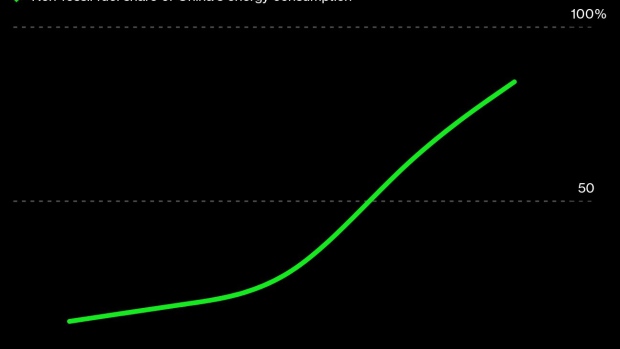Sep 27, 2020
China’s Top Climate Scientists Lay Out Road Map to Hit 2060 Goal
, Bloomberg News

(Bloomberg) -- One of China’s top climate research institutes says the country will phase out coal power around 2050 on its path toward meeting President Xi Jinping’s new climate targets.
Carbon emissions will peak sometime between 2025 and 2030, and total energy demand will start to decline around 2035, according to a new report from Tsinghua University’s Energy and Environment Economy Research Institute, which works closely with the Ministry of Ecology and Environment on projecting long term goals.
The report, presented in a Sunday webinar, is the first road map from a government-affiliated group showing how the country might proceed to becoming carbon neutral by 2060, a goal laid out by Xi last week in a speech to the United Nations. Xie Zhenhua, who led China’s climate policies and represented the country in international climate negotiations for more than 10 years, runs a separate climate research institute at Tsinghua which works with the Energy and Environment Economy Research Institute.
The path, described by director Zhang Xiliang, outlines a slow transition over the next decade and a half, with a rapid acceleration after 2035. Some of the key benchmarks he laid out include:
- China’s carbon emissions are projected to rise from about 9.6 billion tons a year to 10.2 billion between 2025 and 2030.
- Emissions will fall to about 9 billion tons in 2035, and then will decline dramatically to 3 billion per year by 2050, 900 million by 2055 and 200 million by 2060.
- Energy demand will peak around 2035 at somewhere between 6 billion and 6.5 billion tons of coal equivalent.
- Coal-fired power will be phased out around 2050.
- The share of non-fossil fuels in total energy demand will grow from about 15% last year to 20% by 2025, 24% in 2030, 62% in 2050, and 84% in 2060.
- Electricity will make up 80% of total energy consumption by 2060.
©2020 Bloomberg L.P.


